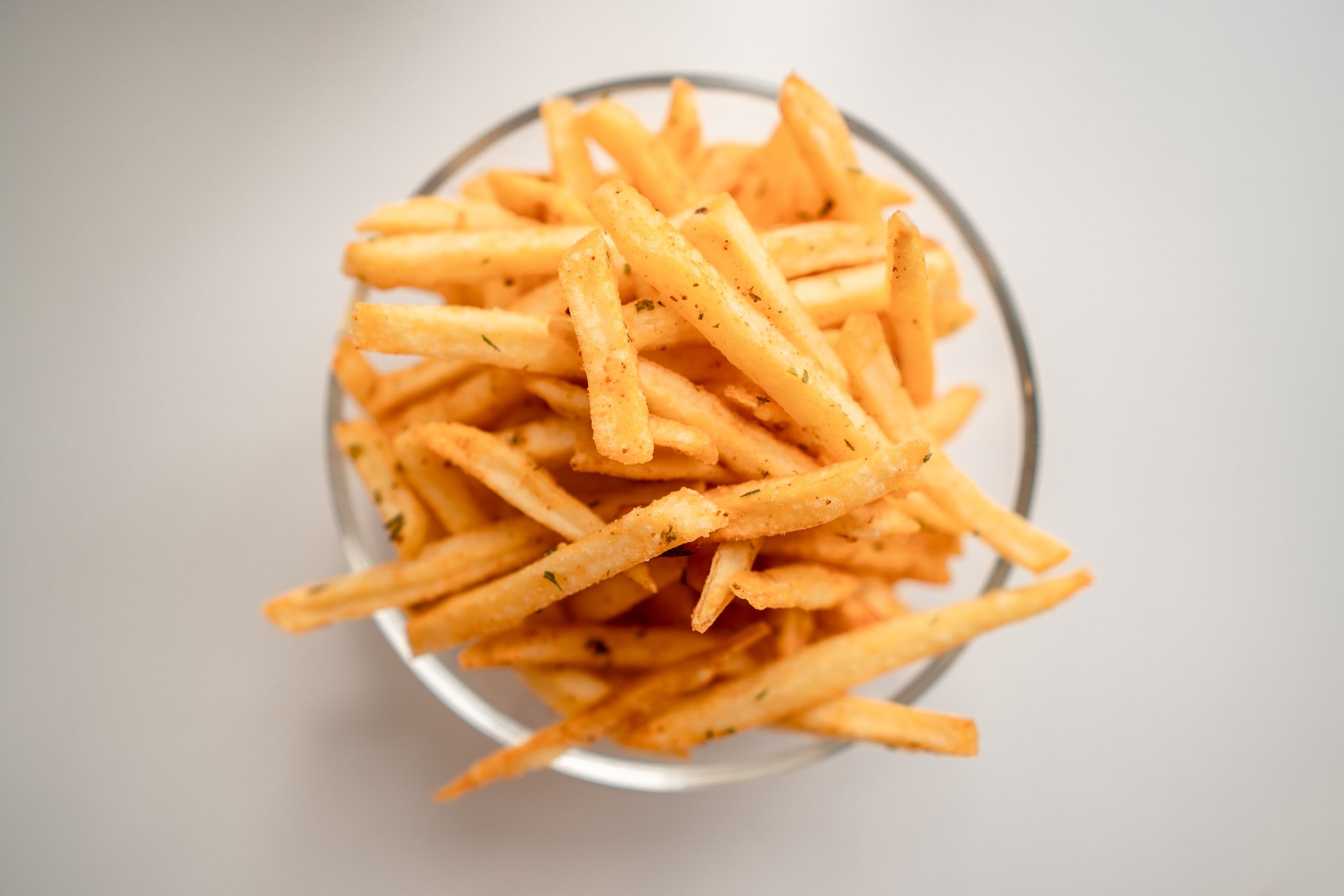Why does frying in oil make food crispy?
The short answer
Frying food in oil makes things crispy because oil conducts heat at a much higher temperature than water. So when hot oil makes contact with to-be-cooked food (which has moisture), it causes the water on the surface of the food to rapidly evaporate leading to a crispy texture.
The long answer
If you’ve fried food before, whether deep-fried or pan-fried with a little fat, you’re familiar with the intense bubbling that occurs when you first drop the food in the hot oil. As the food cooks, the bubbles start to slow down, and when you take the food out of the oil, you have a crispy, golden surface. Those bubbles are steam evaporating off of the surface of the food. And as more and more water gets evaporated, a crust is formed which locks the moisture inside the food. Hot oil quickly evaporating moisture makes food crispy.
Because of how quickly oil is able to heat and crisp food, you’ll often find recipes that include some kind of starchy layer to the outside of your food. The added starch (note: starch is also found on the wet food itself) acts as a crispy barrier to protect your food from drying out. Additionally, the two types of starch molecules, amylose and amylopectin, form some bonds together at high frying temperatures. This chemical bonding further strengthens the structure of the food’s surface.
Which starch is best for frying food? Cornstarch contains 25-28% amylose, higher than other wheat or potato starches, making it a prime candidate for your crispy coating.
Curious about how the world works?
Today You Should Know is a free, weekly email newsletter designed to help you learn something new every Friday.
Subscribe today 👇
Sources
America’s Test Kitchen. (n.d.). Why Starch Gets Crispy When Fried. Cook's Illustrated. Retrieved September 12, 2022, from https://www.cooksillustrated.com/how_tos/8360-why-starch-gets-crispy-when-fried
Choe, E., & Min, D. B. (2007, May 1). Chemistry of Deep-Fat Frying Oils. Journal of Food Science. Retrieved September 12, 2022, from https://ift.onlinelibrary.wiley.com/doi/full/10.1111/j.1750-3841.2007.00352.x

